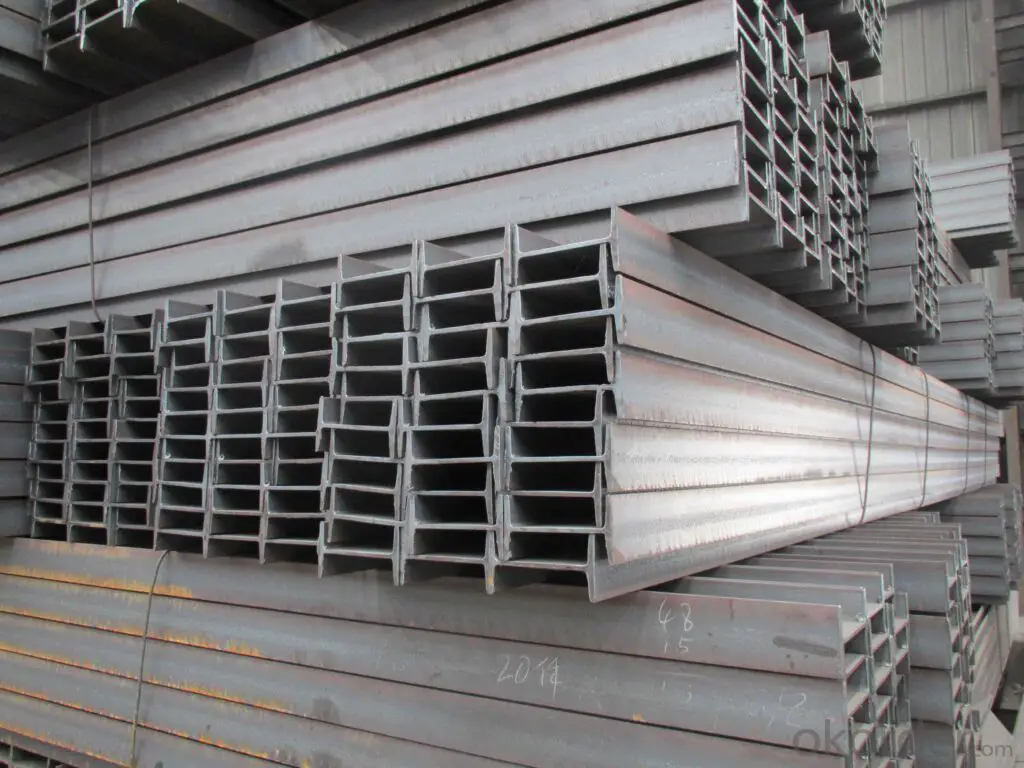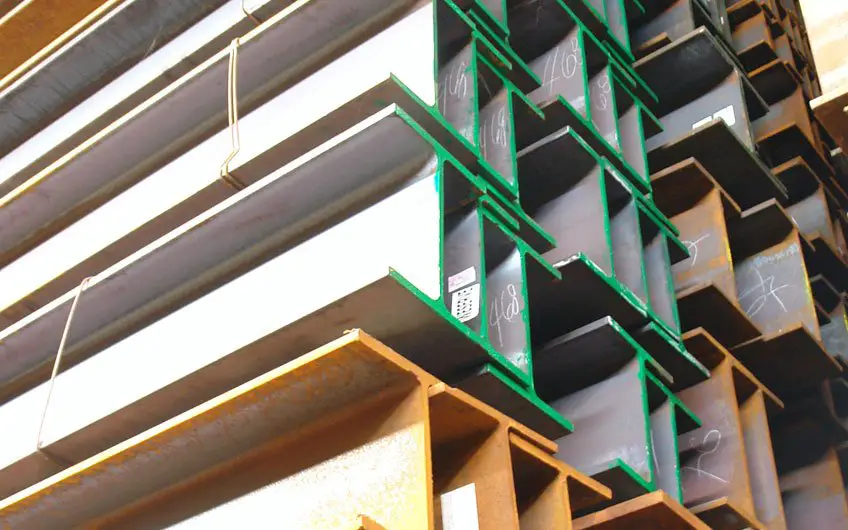I beam is a type of structural steel used in structures. It is also known as H, W, broad, universal beam, or rolling joist. They are intended to play an important part in structures as a support member. These beams can bear a variety of loads.
It got its name from the likeness of its cross-section to the letter I. These beams are widely used to build beams and columns in a range of sizes and specifications. Civil engineers and foremen must comprehend the significance of I beams in steel constructions.
Design of an I Beam
An I beam is created by connecting two long-drawn-out planes called flanges with a perpendicular component called web. This structural member’s whole body features an I or H-shaped cross-section. Along with steel, beams manufactured of aluminum alloys and low alloy steels are available for usage in a variety of applications such as bridges, building frames, and so on.
I beams are manufactured in a variety of diameters, thicknesses, widths, and other specifications for a variety of purposes. Customers categorize this sort of beam based on its substance and size. A 12-inch-deep, 20-pound-per-foot beam, for example, is described as 1220. Contractors choose beam diameters that are adequate for the purposes of their project. When making decisions, the following things should be considered:
- Deflection. The thickness should be sufficient to minimize deflection.
- Vibration. When selecting, try for as little vibration as possible. In this sense, the stiffness and mass of the beam are critical.
- Bending. The bulk body should be sufficiently robust to sustain yield strains. Otherwise, bending will occur.
- Buckling. Torsional forces cause the I beam to buckle, which might have unfavorable implications. Flanges should be chosen with care.
- Tension. It is critical to choose an I beam with the proper web thickness to avoid rippling or buckling under stress.
When subjected to a large load, I beams are intended to flex rather than buckle. The beam’s density is not uniform. The regions with the most axial fibers have a larger density to compensate for the highest stress point. Beams with a small cross-section area are preferable because they require less material while maintaining the desired form.

Where I Beams Are Used?
I beams are widely employed in a variety of steel building applications. These beams are commonly utilized in frames and crucial support parts. The use of steel I beams ensures a sturdy and supportive construction. The utilization of these beams can be cost-effective since it eliminates the need for as many support components. Their adaptability and dependability make them invaluable to any contractor or engineer.
I beams are commonly utilized in construction because they are simple to employ. One of its most distinguishing characteristics is their unidirectional bending tendency. The web component is responsible for resisting shear pressures, whereas flanges resist bending. They can withstand a wide range of loads without buckling. Because I shapes do not need the use of extra steel, they are considered cost-effective. There is always an appropriate type of I beam for any building application. Because of its versatility in all building contexts, these beams have earned the moniker “universal beam.”
How Much Does a Steel I Beam Cost?
The average price of steel I-beams is determined by market circumstances. For example, if there is a large supply of resources but few purchasers, the price will be lower. Steel beam costs will rise due to limited availability and a large number of projects requiring metals at the same time.
Though the cost of steel fluctuates, having a grasp of how it varies will assist. According to Improve.net, the commodity’s price reached as high as $1,265 per ton in 2008. The swing was so dramatic that the average decreased to $90 per ton in 2016.
For Philippines’ prices of I beam on material alone, you can check I-Beam Guaranteed Best Construction Material Philippines’ Prices
Cost Considerations
Of course, purchasing I-beams is not the end of a building endeavor. Aside from the materials budget, you must plan for other costs like as installation, labor, and steel beam replacement.
According to Home Advisor, the steel beams normally cost between $1,185 and $3,909. That is, if you hire a professional to do the installation.
In terms of specialists, Home Advisor estimates the following labor costs:
Engineers may charge between $400 and $600 to determine the right size and strength of metal beams.
Contractor/s: Each beam installation might cost between $200 and $400.
Delivery service: Labor and equipment rental may cost between $600 and $1,200 per day.
There are times when existing steel beams must be replaced. According to US Water Proofing, a simple installation may cost $7,000 to $8,000, while a comprehensive work may cost $20,000 to $25,000.
Saving Money With I-Beams
Perhaps you can save money by installing the steel beams yourself. Wrong. To begin with, working with these materials is not a task for amateurs. Only by hiring a skilled contractor can your project be successful. Remember that the installation is part of the basis of your home, therefore ensuring its success is critical.
If you’re worried about overspending, realize that employing I-beams can save you money in subtle ways:
Steel is a recyclable material. That implies you won’t have to pay landfill fees as a result of non-recyclable building trash. Furthermore, steel businesses would like to gather what’s left of your project so that they may utilize it to make new beams. Of course, this comes at no cost to you.
Steel has a long lifespan. This substance can serve as your basis for a long period. Aside from their endurance, I-beams require little maintenance, which saves you money.
Steel production innovations. Materials that are easier to manufacture result in reduced end product prices. This is because employees require fewer hours to create a single ton of I-beam. So, as long as there are advancements that assist speed up the production process, I-beam prices will certainly continue to fall.

